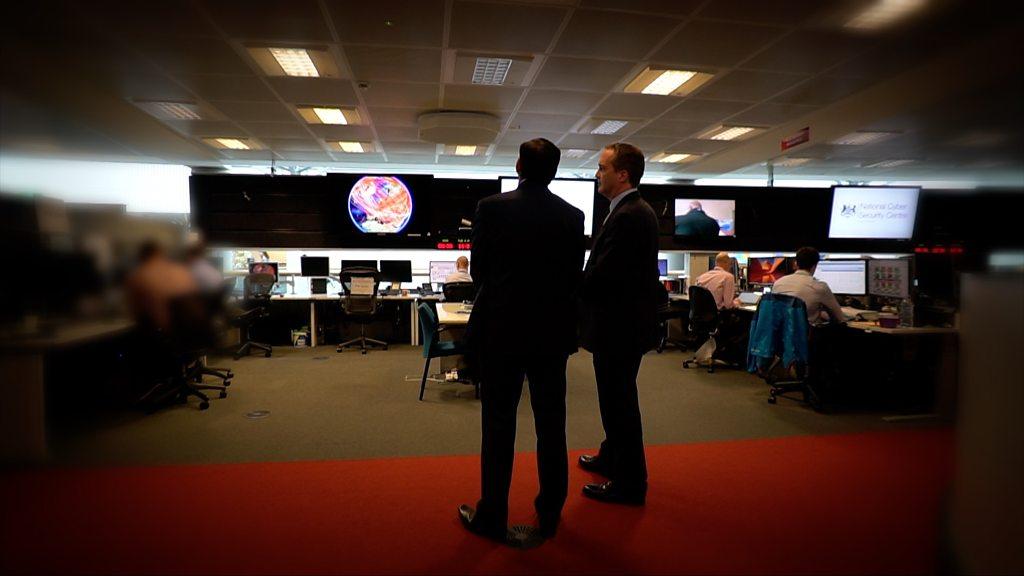Inside GCHQ as it celebrates 100 years
- Published
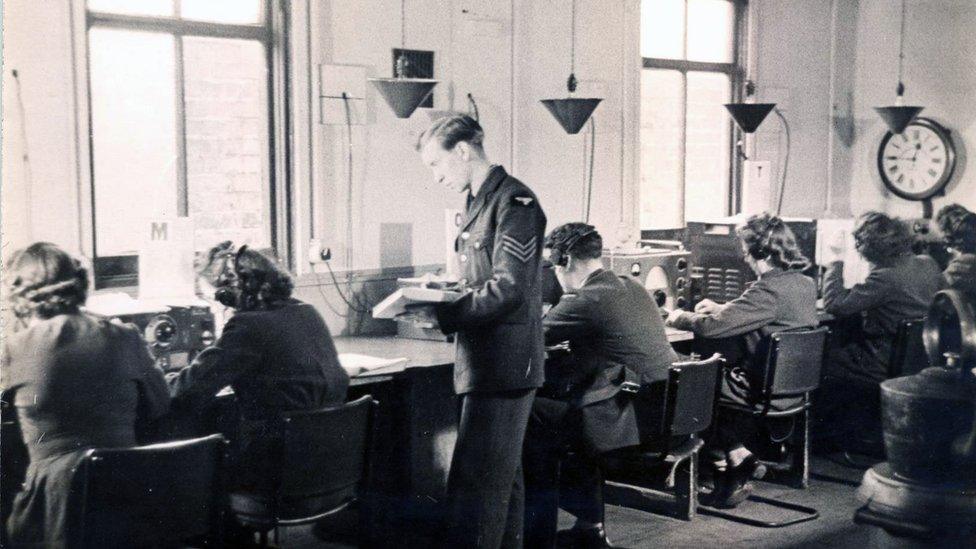
This picture shows the Set Room at RAF Cheadle in Staffordshire during World War Two
Images showing life behind the scenes at the government's listening post have been released on its 100th anniversary.
GCHQ was formed on 1 November 1919 under the original name of the Government Code and Cypher School.
Since then it has intercepted and analysed the communications of those who seek to do the UK harm.
Beginning life in London, it was famously homed in Bletchley Park in World War Two before moving to Cheltenham in 1950.
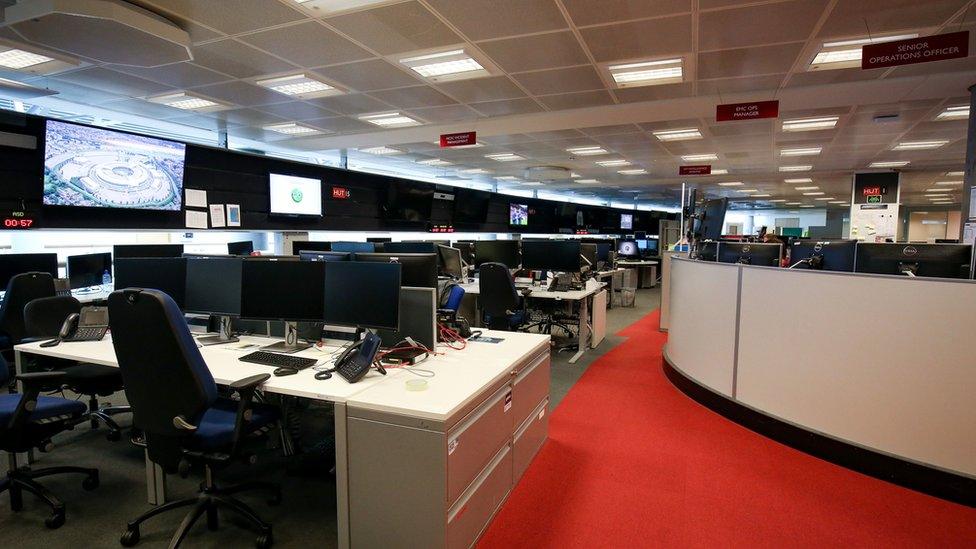
Bosses said GCHQ had foiled 23 attacks in the past four years
Some photographs are from the GCHQ archives, while others show inside the modern Cheltenham headquarters - known as the "doughnut" - which opened in 2003.
GCHQ historian Tony Cromer said targets may have changed over the years, with work now different from tackling the Nazis in World War Two, but "the fundamental issues that we face really have just carried on throughout the period".
He said key moments in GCHQ's history included breaking the Enigma code in World War Two, providing intelligence for D-Day and contributing to efforts in the Cuban missile crisis.
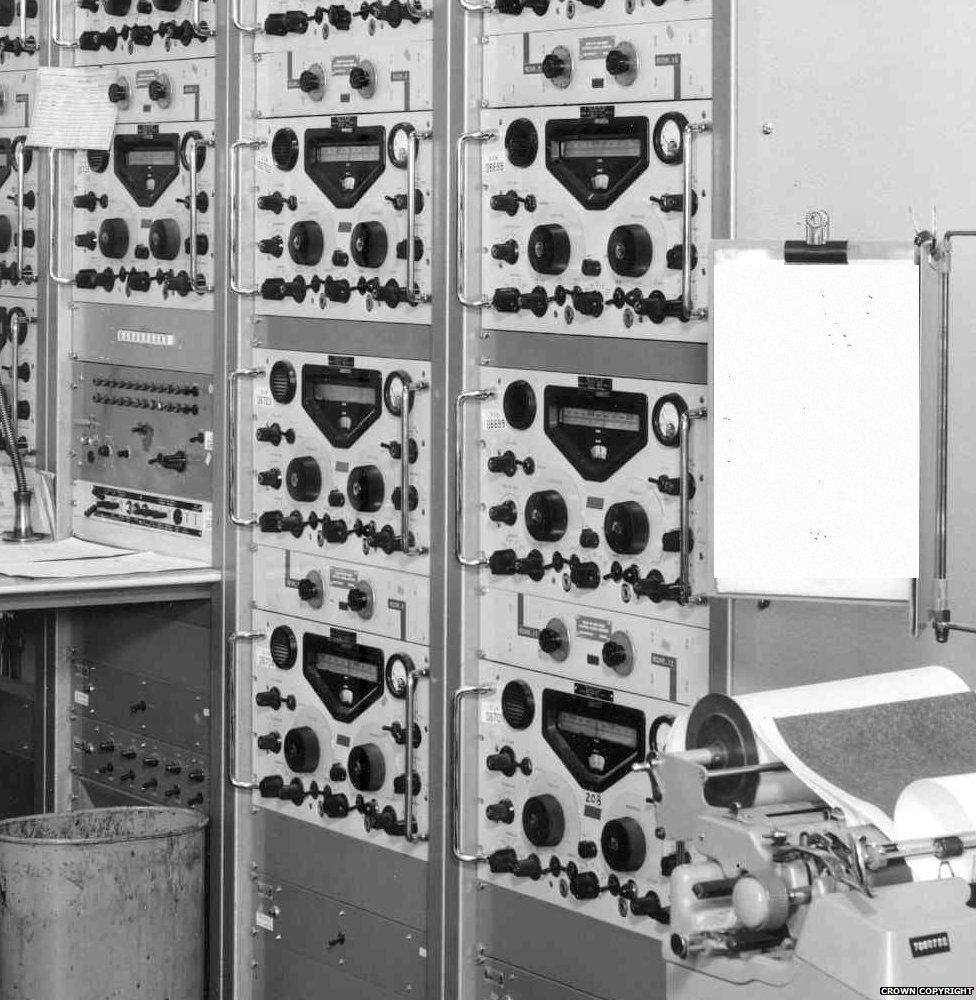
Inside the listening station at Hawklaw near Cupar, Fife
Mr Comer said there were still myths about how GCHQ operates.
"The most common misconception is that we listen to every single telephone call in the world and we read every email," he said.
"It's surprising how many people don't stop to think it would be inconceivable to do that.
"We would be completely snowed under by material that was not important."
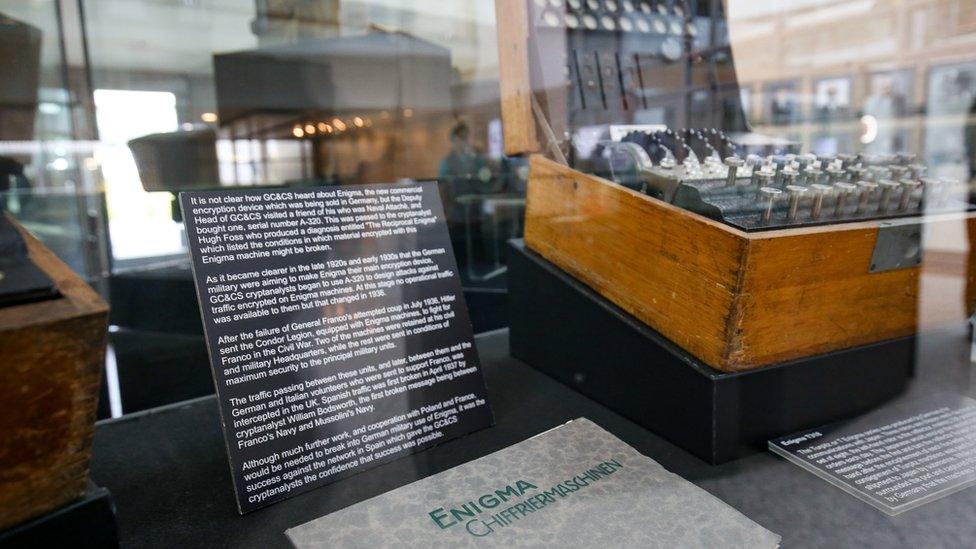
A key moment in GCHQ's history was breaking the Enigma code in World War Two
Until 1983 the intelligence agency's existence was not officially acknowledged, and still today the workforce do not talk publicly about exactly what they do.
Bosses said GCHQ had foiled 23 attacks in the past four years, along with MI5, SIS and the police.
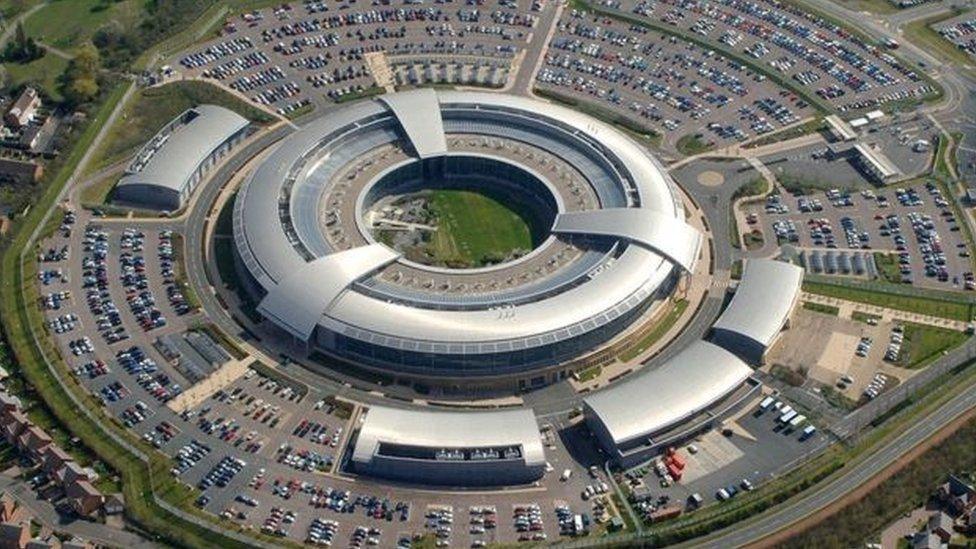
The GCHQ "doughnut" opened in 2003
Other current GCHQ sites across the UK include Bude, Scarborough, Harrogate, Lincolnshire and London.
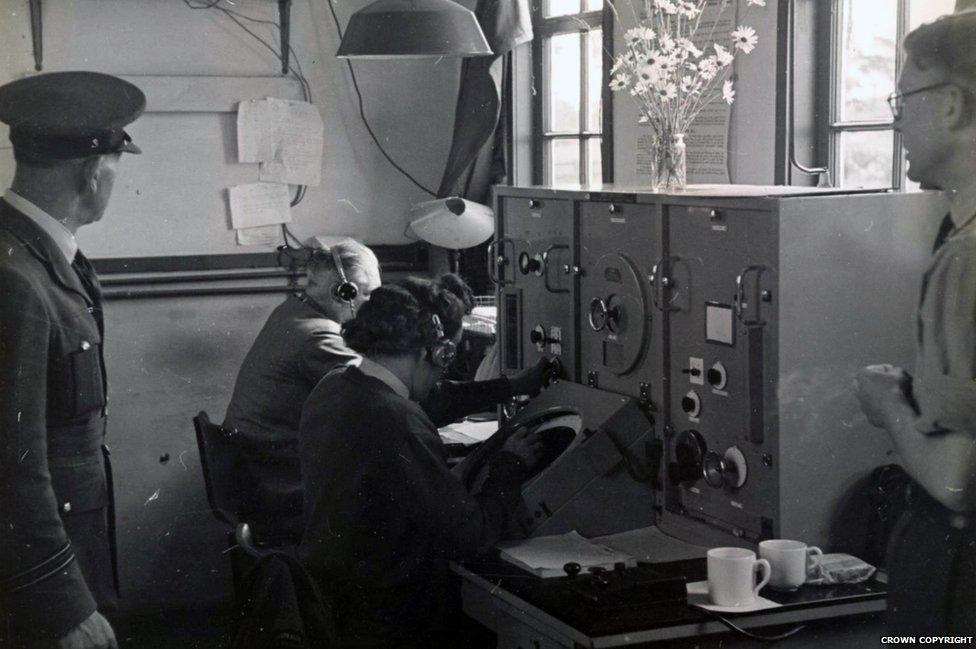
RAF Cheadle in Staffordshire during World War Two

Antenna field at Flowerdown near Winchester
All pictures subject to copyright.
- Published14 December 2012
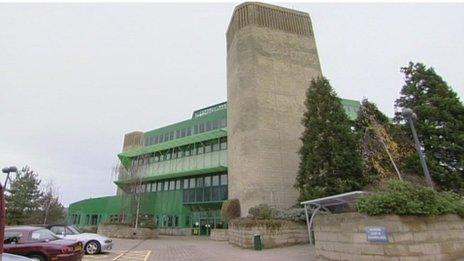
- Published8 June 2016
- Published5 April 2017
